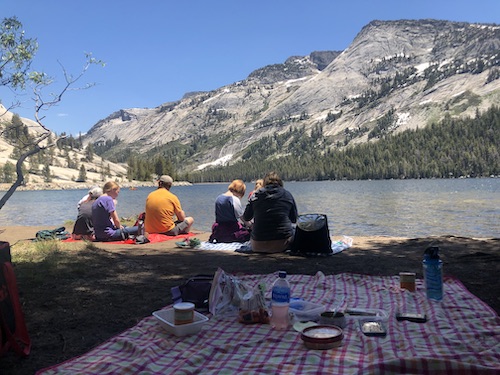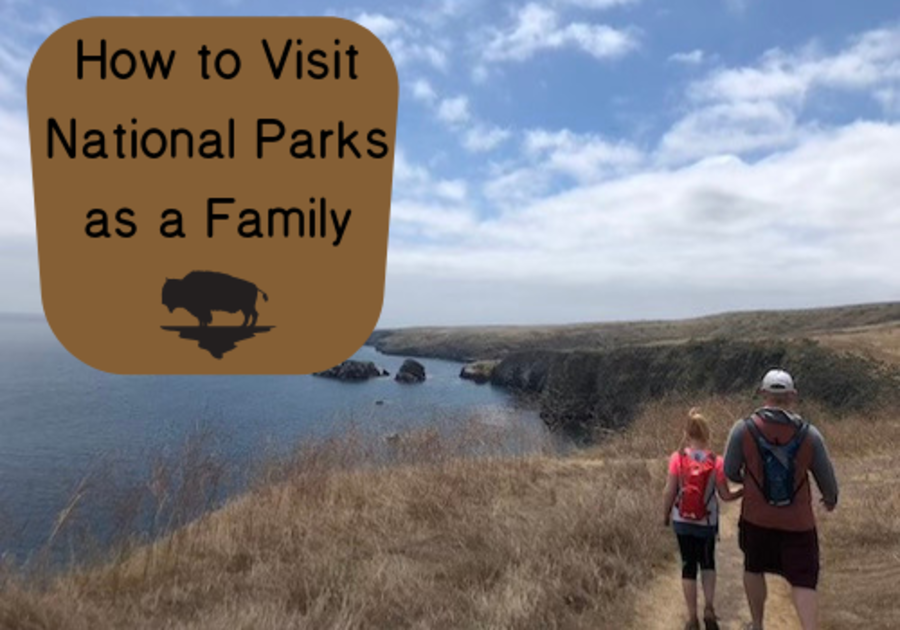My family and I love exploring national parks each summer. We pick a state and then visit as many of them as possible. These amazing parks are truly our nation's treasure and can be enjoyed by families of all ages. I can think of no better way to be out in nature and learn about our country at the same time.
The idea of exploring a national park with kids in tow, however, can sound daunting to many families. But in our experience, we've found the parks can be enjoyed on many levels -- and at all ages. This is how we navigate our visits to America's national parks with our kids:
"National parks are the best idea we ever had. Absolutely American, absolutely democratic, they reflect us at our best rather than our worst." - Wallace Stegner
We plan ahead:
- Look at the weather. Many national parks take you way above (or below!) sea level. This makes for drastic weather changes. Make sure you know what the typical weather is for when you are going. You can find weather updates on www.nps.gov.
- Take a look at the National Park System website. You will find general information, directions, maps, and facility information (restrooms, parking, visitor centers, etc) for the locations you plan to visit.
When we arrive, we:
- Find out when the visitor center opens and start there. Many national parks have a visitor center with a movie and/or an exhibit about the park. My elementary-aged kids can enjoy the landscape more when they understand the history behind it.
- Talk to a ranger. Every visitor center has a ranger on staff to answer any questions you may have. With maps and papers in hand, they can point you in the direction of the best hikes and views for your family's needs.
- Get a paper map. Do not depend on GPS navigation or cell service to guide you through a park.
- Ask for a Junior Ranger packet. Every national park has a Junior Ranger program. This is a booklet of assignments kids of all ages can do while visiting a park. It's a great way to keep them engaged and learning while in the park. When completed, kids can turn them in to a ranger and get sworn in as an official Junior Ranger.
Junior Ranger ceremony, during which kids promise to help take care of the parks. |
Then it's time to take a hike!
There is no better way to get to know a national park than to hike in it. Most parks will have trails ranging from a short overlook to an entire day’s hike. They are rated on difficulty by terrain and elevation gain/loss. As our kids have gotten older, we’ve been able to add in two or three-mile hikes, on top of the many half-mile loops they loved as youngsters.
 Hiking in Lassen Volcanic National Park. |
What we pack for the day:
- Water: No matter what the season, make sure you have water. There are often refill stations throughout a park, but make a note of where they are on a map, especially in the hotter months. We are big fans of hydration packs you can wear on your back.
- Snacks and/or a meal: If you're going to be moving, you're going to get hungry! Many parks offer picnic areas that offer tables, restrooms, trash receptacles and food storage from animals. You never know what perfect spot you'll find to picnic.
- Garbage bag: Whatever you take into the park, plan to take it home with you. While many parks have waste receptacles for garbage, they aren’t all over the place. We often take a small bag with us for trash, just in case we don’t find an appropriate place to leave it in the park. Remember, national parks are set up to protect the landscape and wildlife, not for our entertainment. Be prepared to leave nothing behind.
- Layers: Whether you are in the mountains, the desert, the forest, or the midwest, national parks often have drastically different temperatures in the morning than midday and even the evening.
- Sun protection: You can still get sunburned in the winter on a snow-covered mountain. Sunscreen, sun shirts, sunglasses, and hats will help protect your skin and eyes.
- Good shoes: Even level hiking paths can have uneven rocks and fallen trees. Make sure you have shoes with good support for all of your walking needs!
- Bug spray: You will know when you need it!
- Gas: If you’re planning on spending all day in a larger, more remote park, make sure you have a full tank of gas. You do not want to get stranded in the middle of a park. Depending on where you are, there may be no cell service.
 A picnic in Yosemite National Park. |



